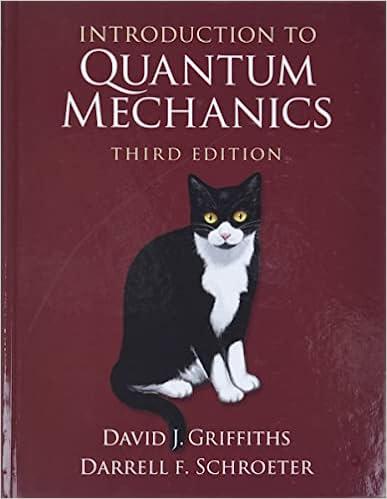Neutron diffraction. Consider a beam of neutrons scattering from a crystal (Figure 10.14). The interaction between neutrons
Question:
Neutron diffraction. Consider a beam of neutrons scattering from a crystal (Figure 10.14). The interaction between neutrons and the nuclei in the crystal is short ranged, and can be approximated as

where the ri are the locations of the nuclei and the strength of the potential is expressed in terms of the nuclear scattering length b.

Figure 10.14: Neutron scattering from a crystal.
(a) In the first Born approximation, show that

where q Ξ k - k'.
(b) Now consider the case where the nuclei are arranged on a cubic lattice with spacing a. Take the positions to be
![]() where l, m, and n all range from 0 to N-1, so there are a total of N3 nuclei. Show that
where l, m, and n all range from 0 to N-1, so there are a total of N3 nuclei. Show that

(c) Plot
 as a function of qx α for several values of N (N = 1,5,10) to show that the function describes a series of peaks that become progressively sharper as N increases.
as a function of qx α for several values of N (N = 1,5,10) to show that the function describes a series of peaks that become progressively sharper as N increases.
(d) In light of (c), in the limit of large N the differential scattering cross section is negligibly small except at one of these peaks:

for integer l, m, and n. The vectors Glmn are called reciprocal lattice vectors. Find the scattering angles (θ) at which peaks occur. If the neutron’s wavelength is equal to the crystal spacing a, what are the three smallest (nonzero) angles?
Comment: Neutron diffraction is one method used, to determine crystal structures (electrons and x-rays can also be used and the same expression for the locations of the peaks holds). In this problem we looked at a cubic arrangement of atoms, but a different arrangement (hexagonal for example) would produce peaks at a different set of angles. Thus from the scattering data one can infer the underlying crystal structure.
Step by Step Answer:

Introduction To Quantum Mechanics
ISBN: 9781107189638
3rd Edition
Authors: David J. Griffiths, Darrell F. Schroeter





